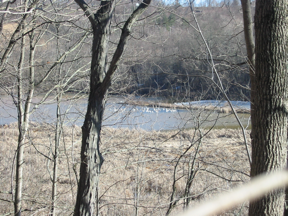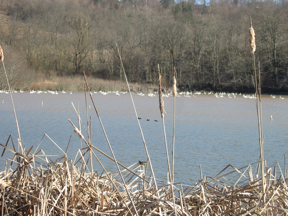
In the fall of last year SCWA transplanted a female swan from Ethel Springs Lake in Derry (thank you Municipal Authority of
Derry) to be a companion for Cygnus. We were concerned that only a single swan would not stay all alone.
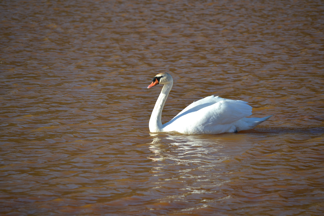
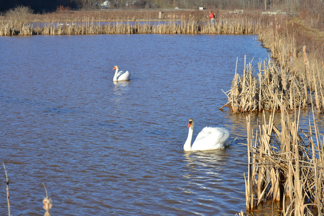
We needn't have worried, soon he was joined by friends.
A local resident writes:
At one time there
were 8 new Swans (4 pair); that means that at one time this year there
were 10 Mute Swans on the Lowber Wetland.
Migrating Native swans fly over this area. It is part of their
migratory flyway. They are more often heard than seen. They sound like
a more mellow sounding flock of Canada Geese, somewhat like the mournful
cooing of our Mourning Doves. During migration Tundra Swans have
actually tarried at more remote wetlands located about a mile upstream
for the Lowber Wetland. During the day they would feed in neighboring
cornfields and return to the wetlands for over night.
Keep in mind that for two years now a Bald Eagle has been seen perched
in or flying over the Lowber Wetland. This adds meaning to the phrase,
"If you build it they will come." These big birds stop traffic on the
road that parallels the Treatment Center and lends integrity to our
mission statement, "To protect and restore the quality of natural
resources in the Sewickley Creek watershed."
The Lowber Wetland also attract flocks of Canada Geese and various ducks
and other waterfowl. A Snow Goose has also been observed bivouacking at
Lowber. Tree Swallows nest in bluebird boxes built an installed by SCWA
member John Hilewick.
You can see one of John's bluebird boxes in this picture back on the
dike between the lead Swan and the second Swan.
Purple Martins occasionally dine over the waters of the Treatment Center
and Wetland. Kingfishers, Wood Cocks and other birds inhabit and/or
frequent these ponds, Red-Winged Blackbirds, Song Sparrows, Cardinals,
Robins, Cedar Waxwings, Yellow Warblers, Yellow Throats, Chickadees,
Titmice and Flycatchers; Woodpeckers also nest in the dead trees in the
Wetland; a pair of Red-Tailed Hawks nest on the ridge overlooking the
site.
Tracks of Racoon and Deer are prevalent around the ponds. Wild Turkey
fly from the ridge above and cross our ponds and Sewickley Creek that
parallels the road past the Lowber site. Snakes, Turtles, muskrats and various
fish inhabit the Wetland.
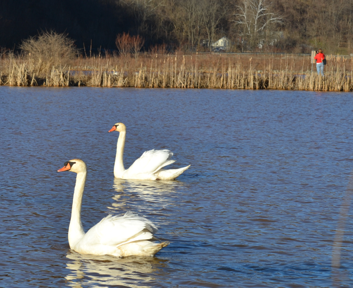

Our resident observer writes:
Here are pictures of Tundra
Swans (they used to be called "Whistling" Swans) on a
wetland just up the road from the Lowber facility. The
Tundras are gone now. But they occasionally bivouac here on
their way too and from the Tundra where they breed and raise
their young. They are more timid than Mute Swans and so
prefer this more remote site or we would see them all over
the Lowber site. If you are at Lowber when they fly over
you can hear their distinct call. Many people don't even
look up. They think they are just another flock of Canada
Geese; but they aren't; they are bigger and all white except
for black bills, legs and feet. Their necks are also
noticeably longer and their wing beat more ponderous and, if
you are up close, noisier.
